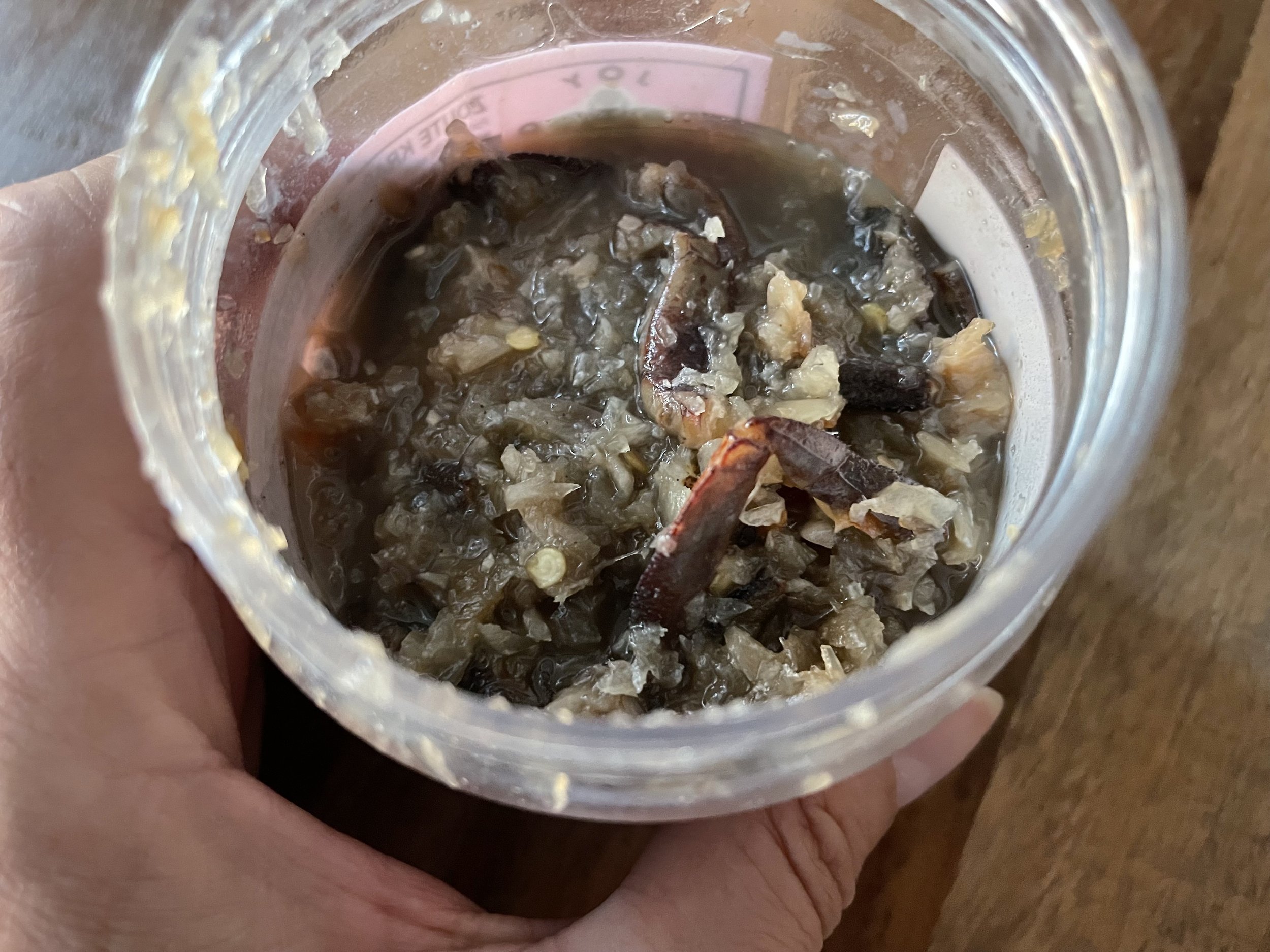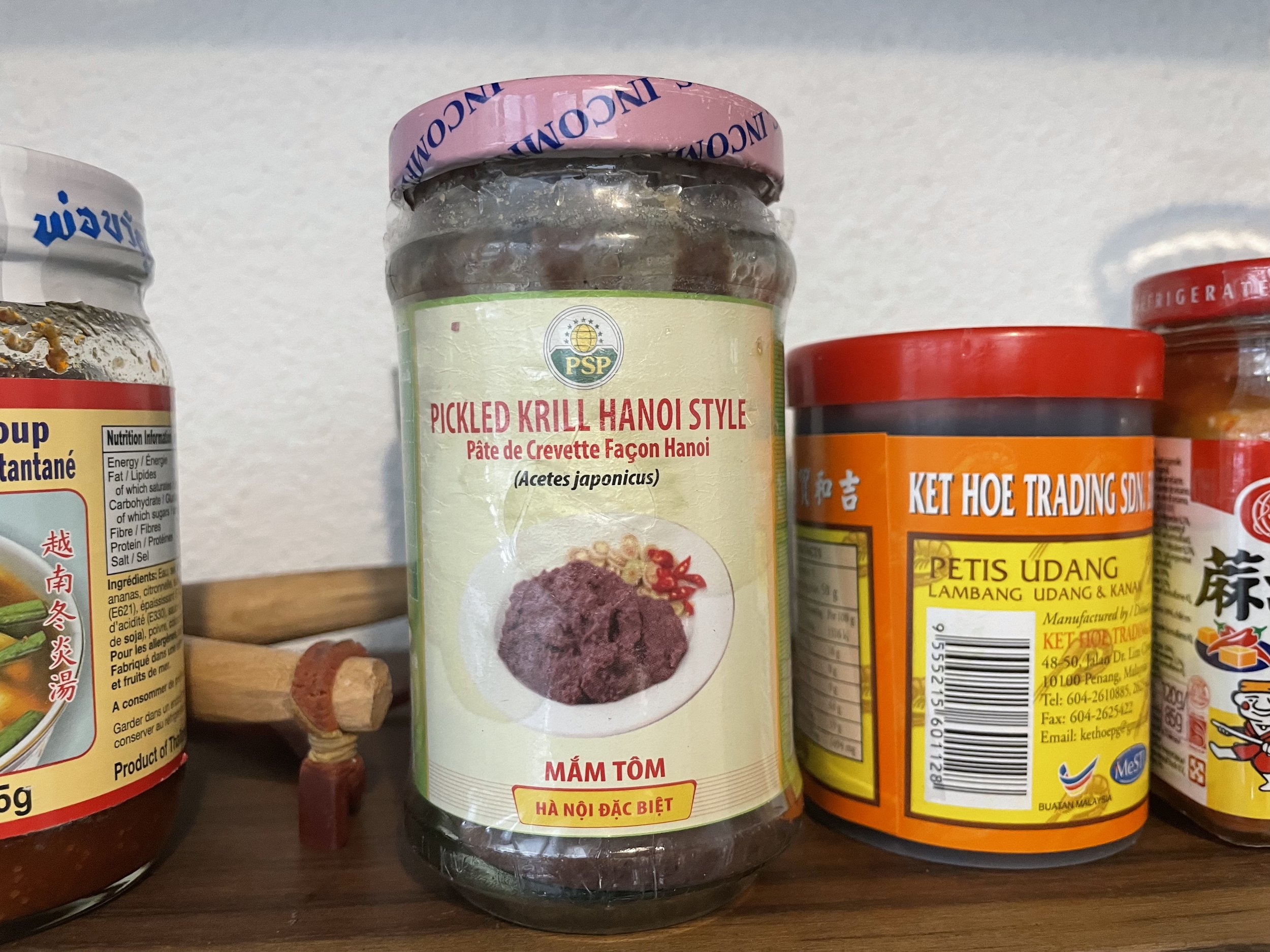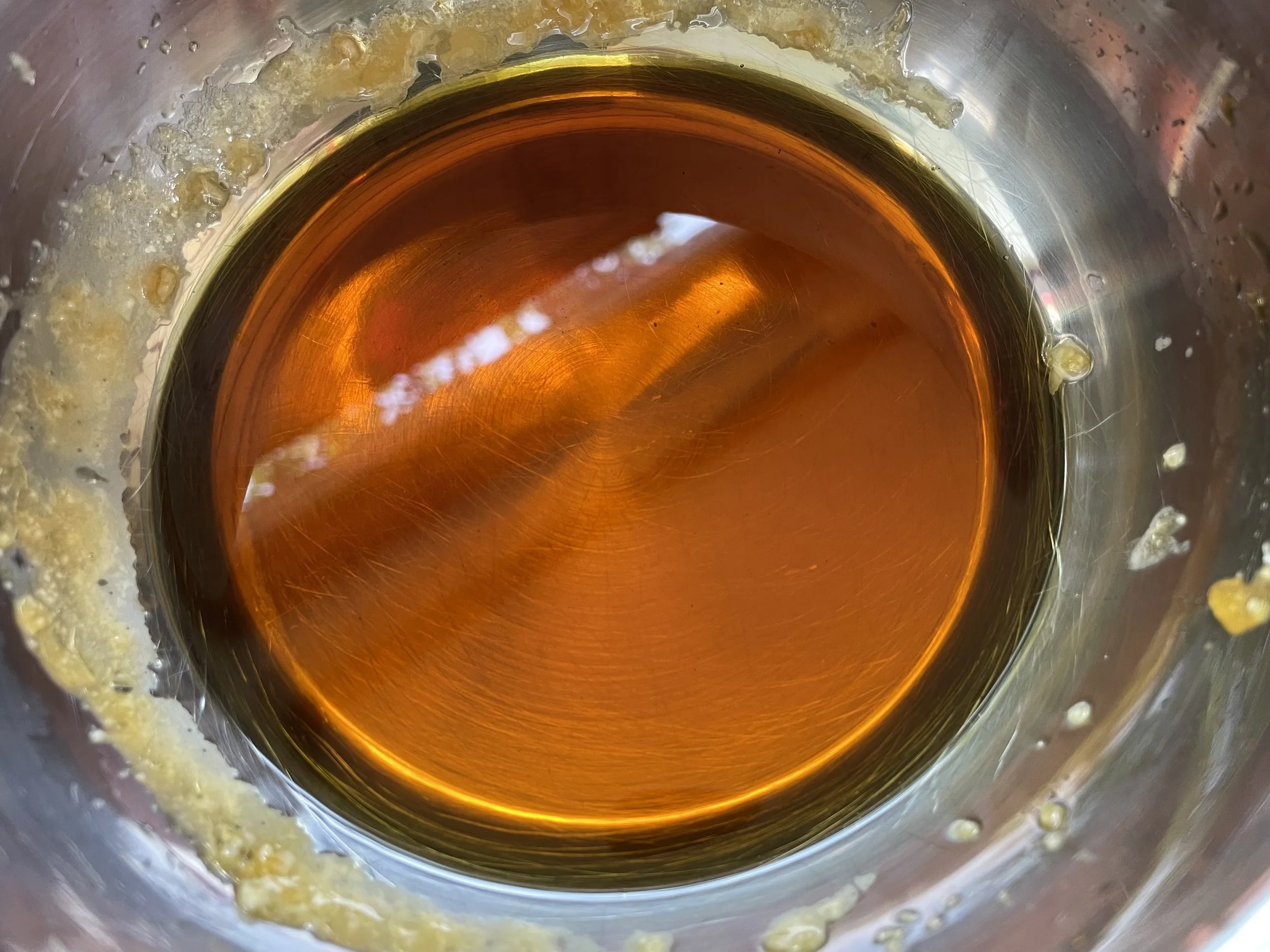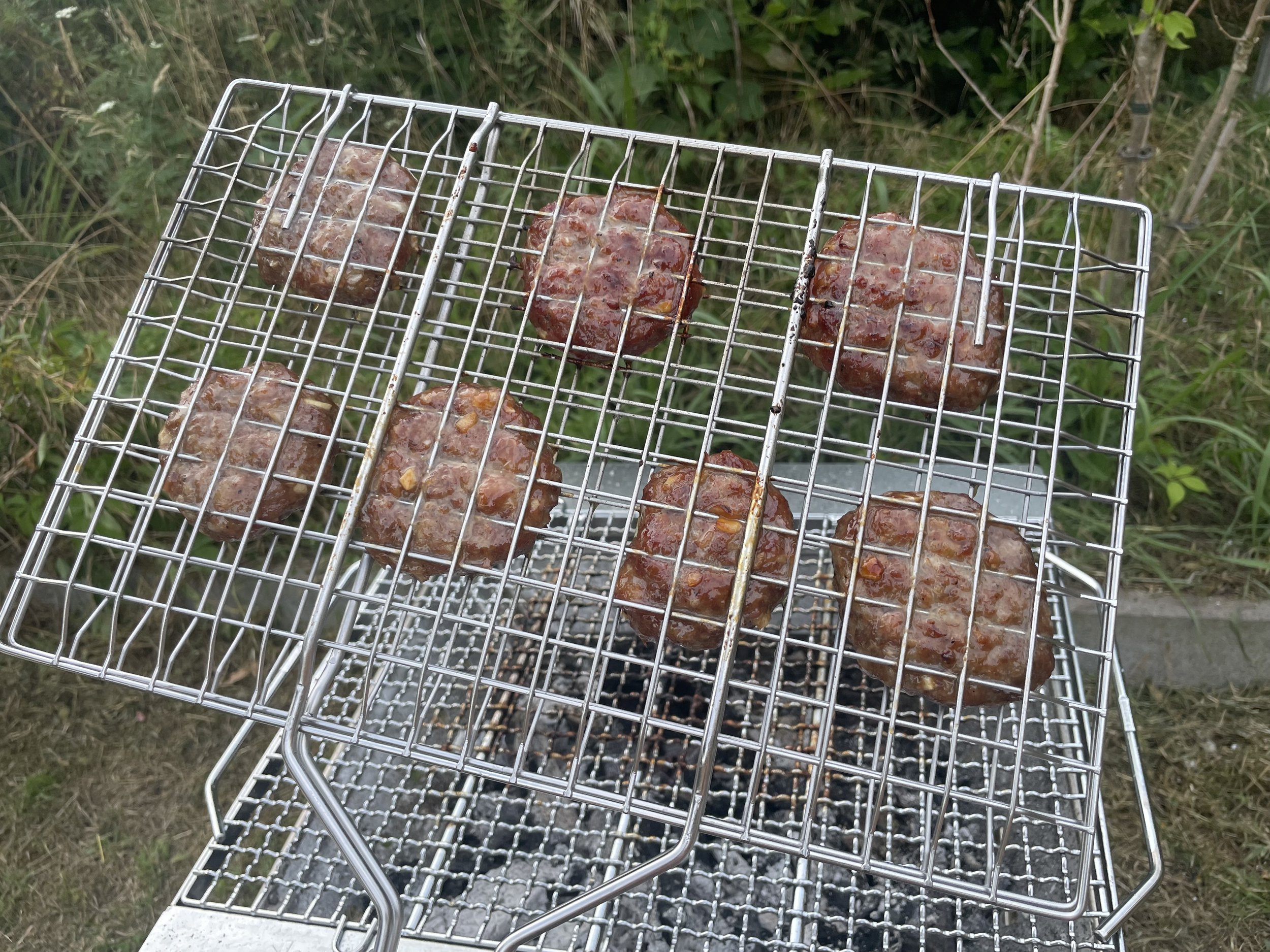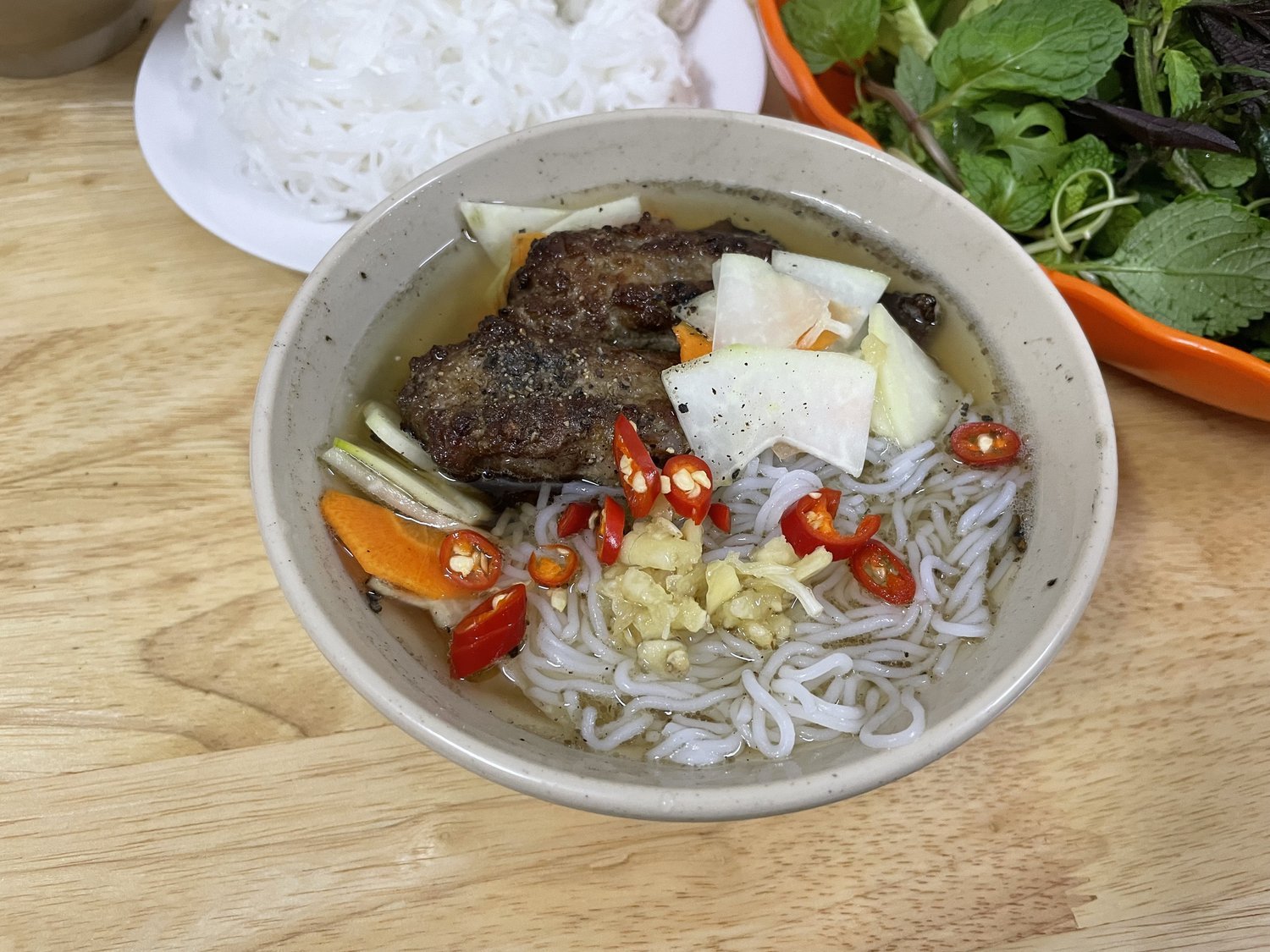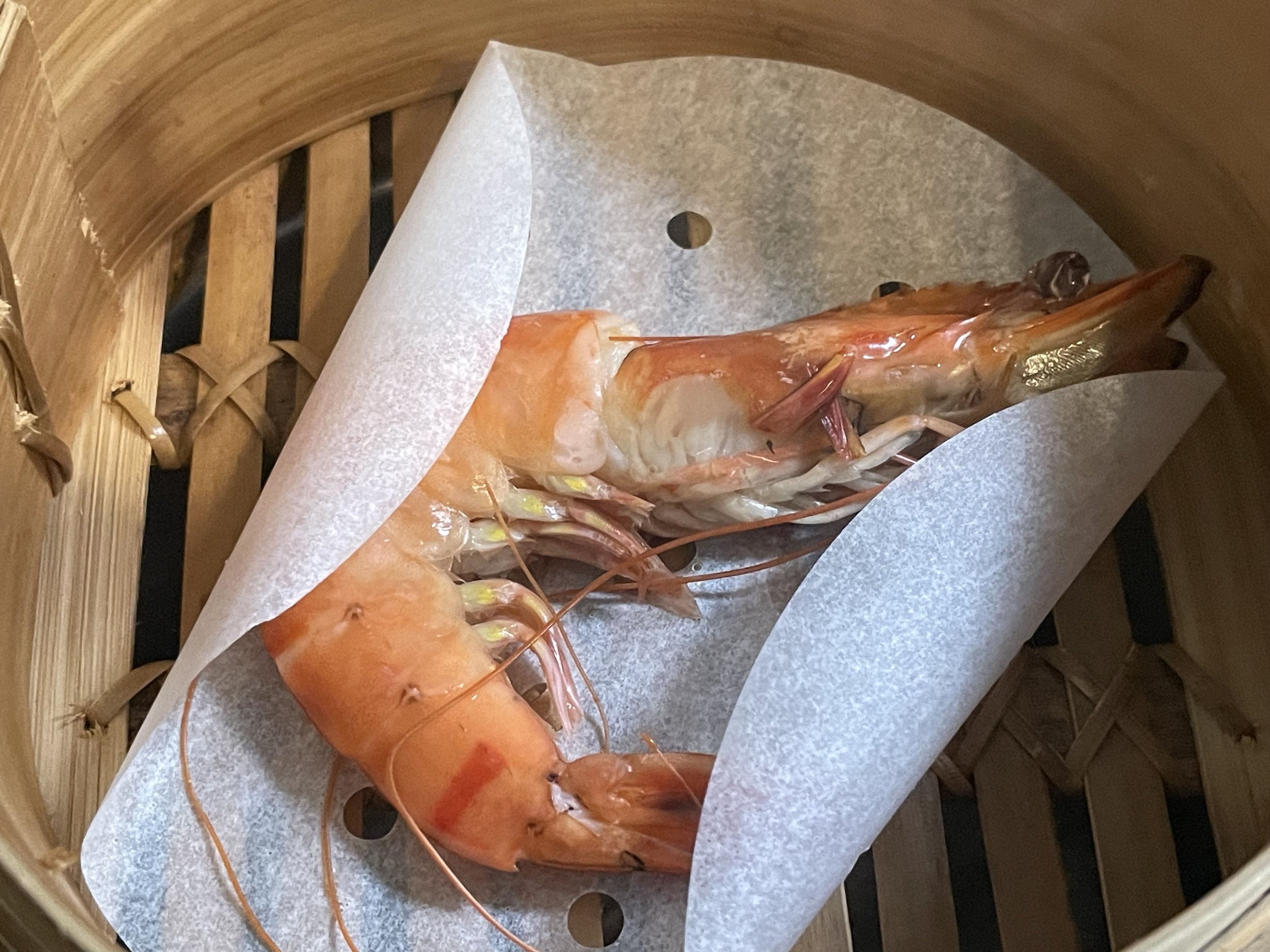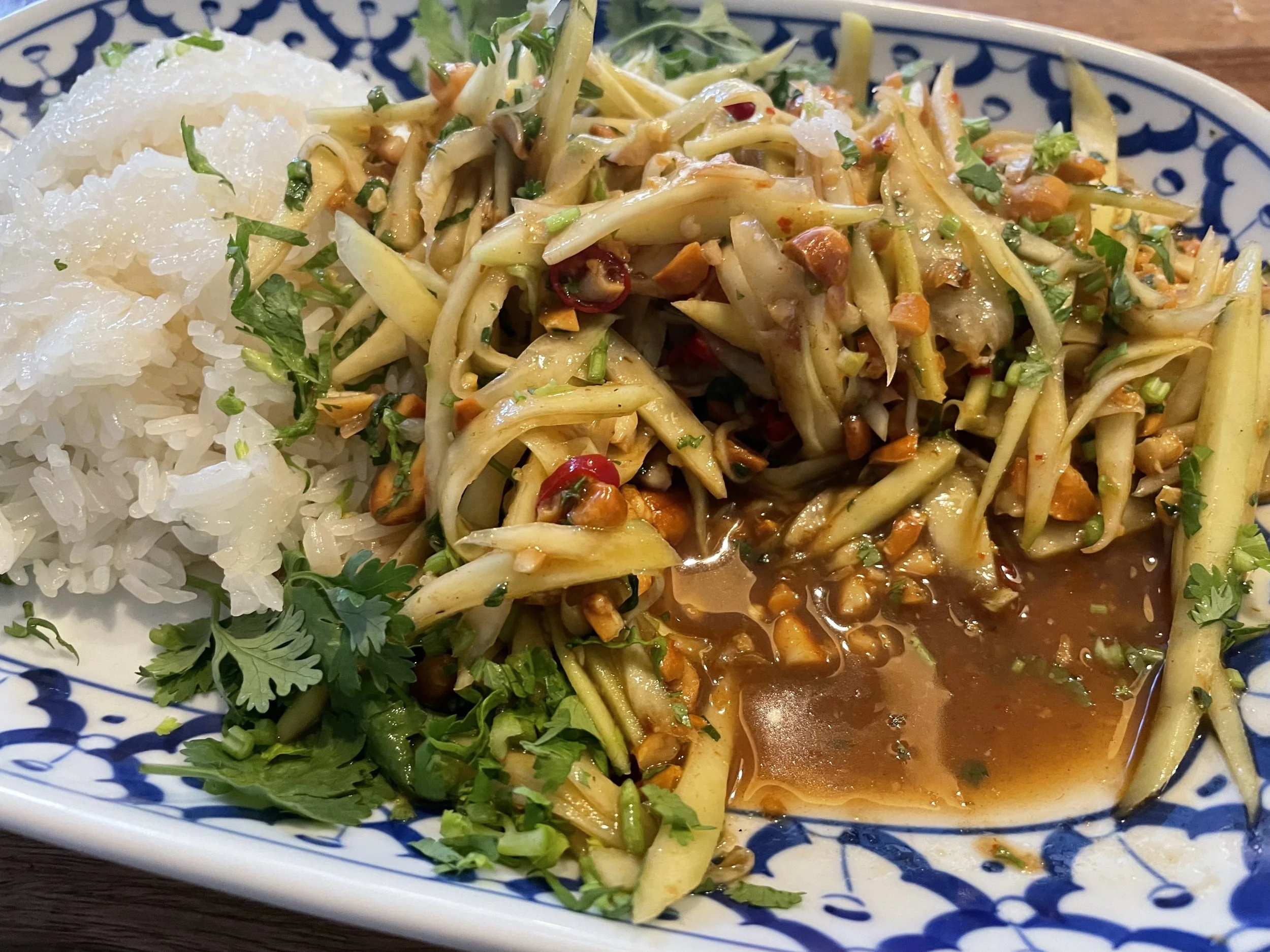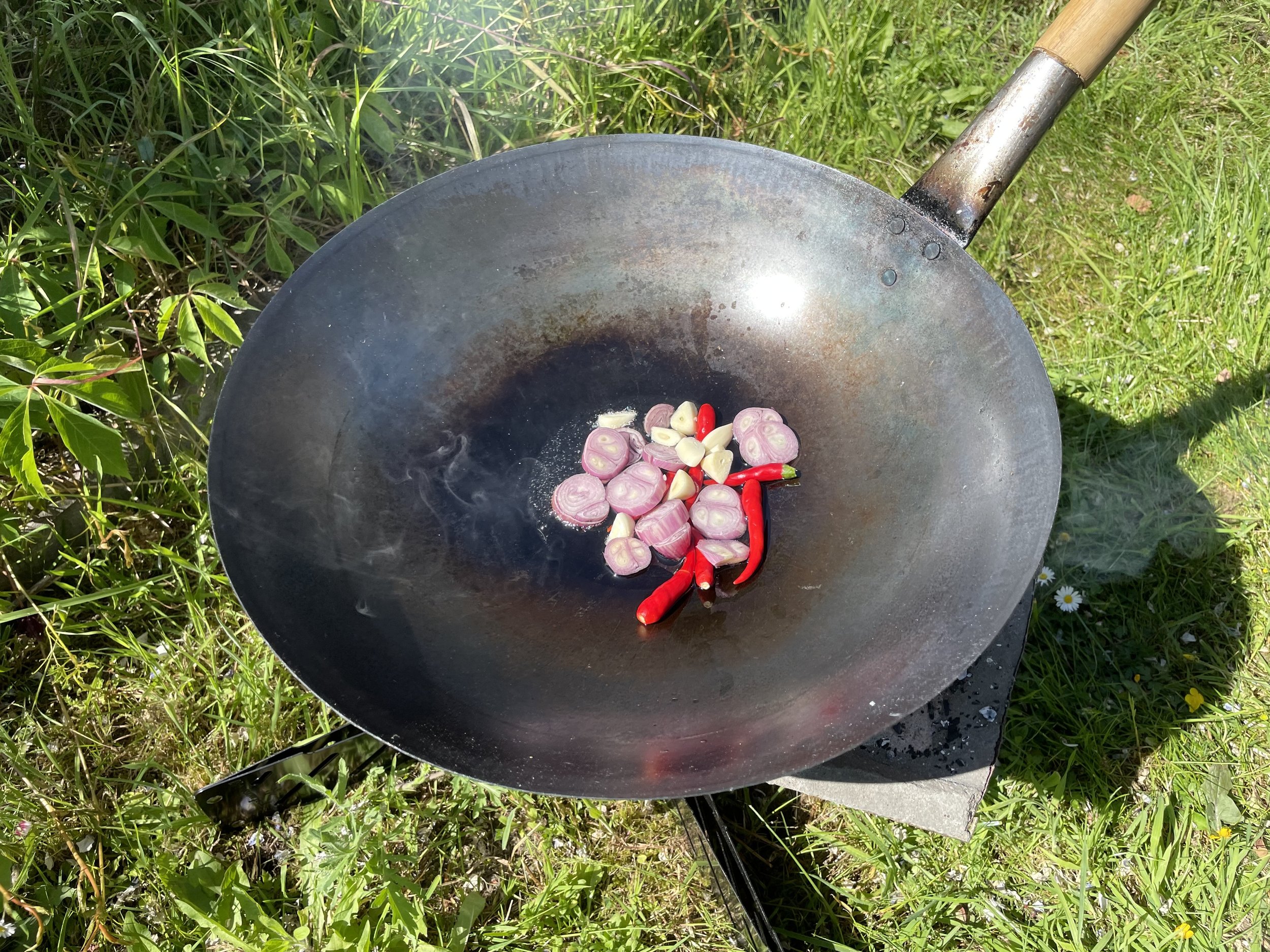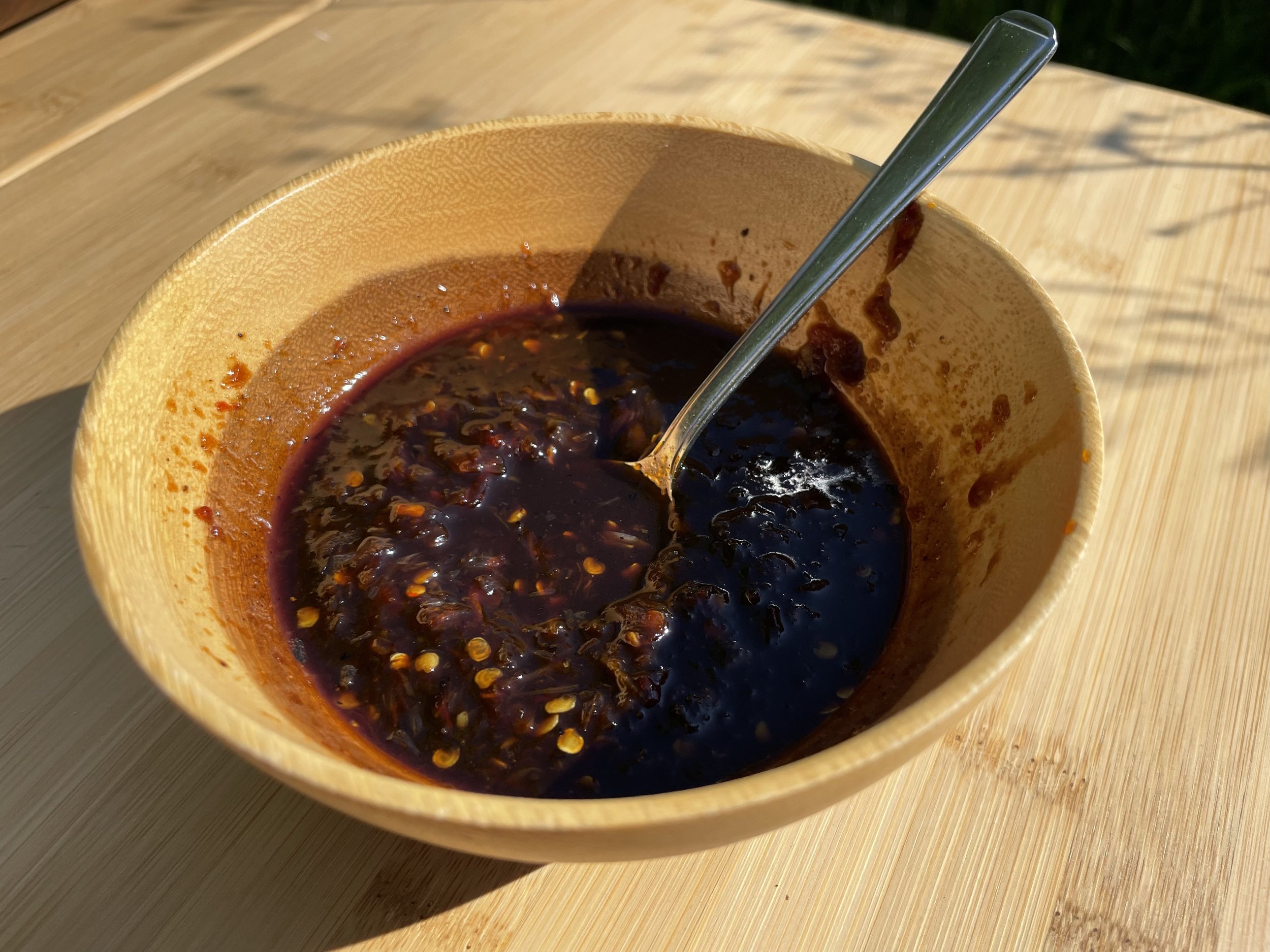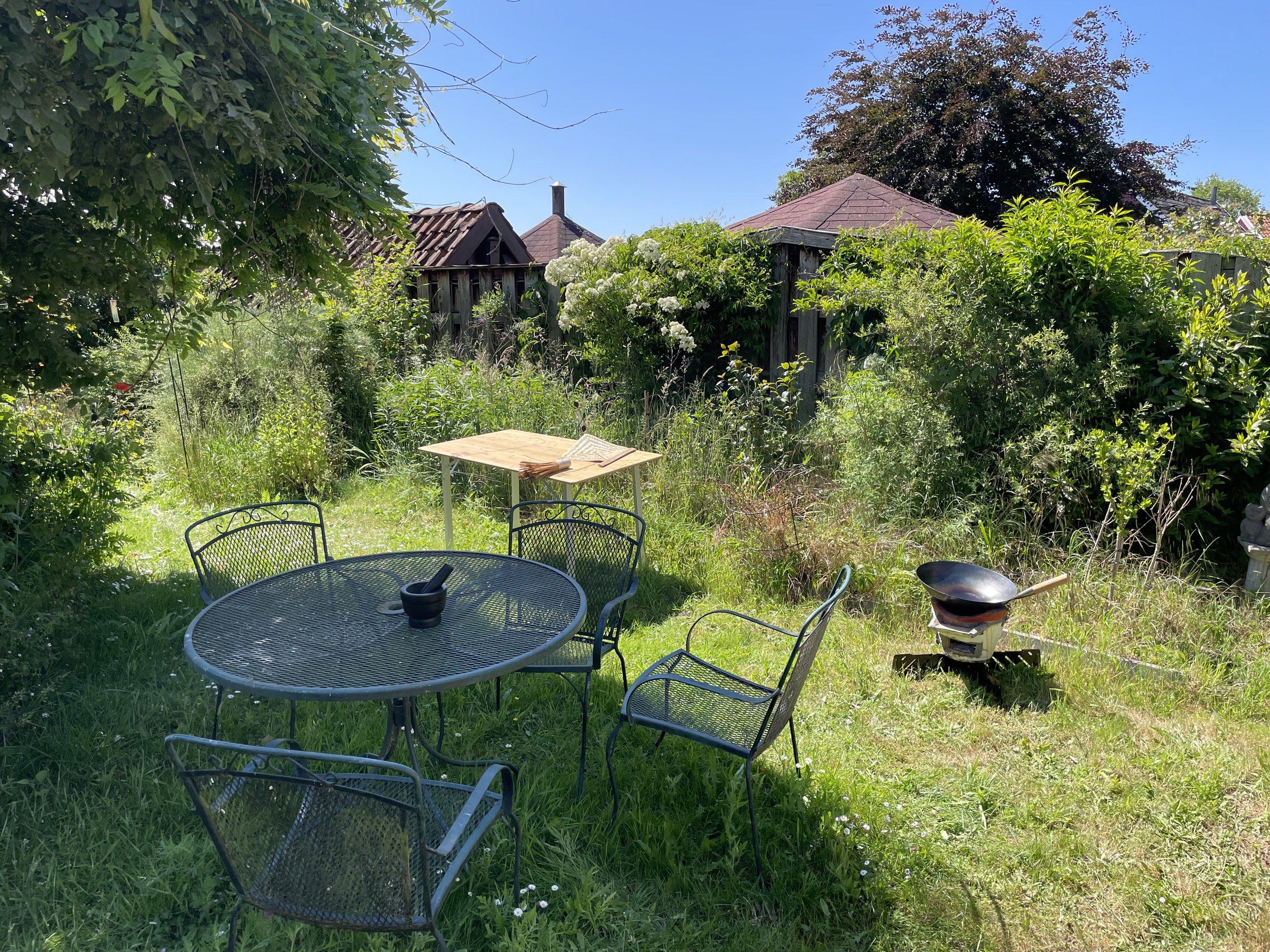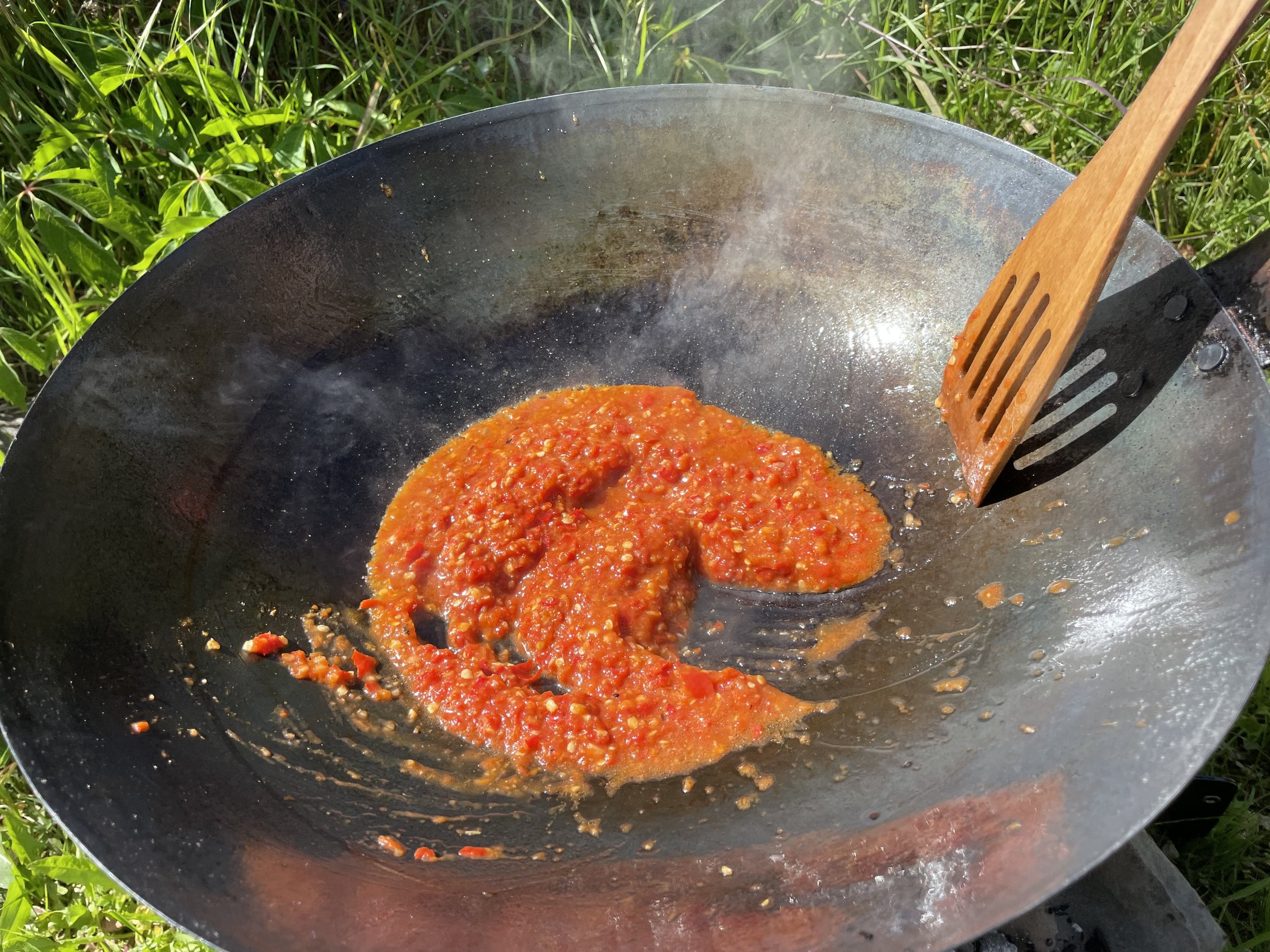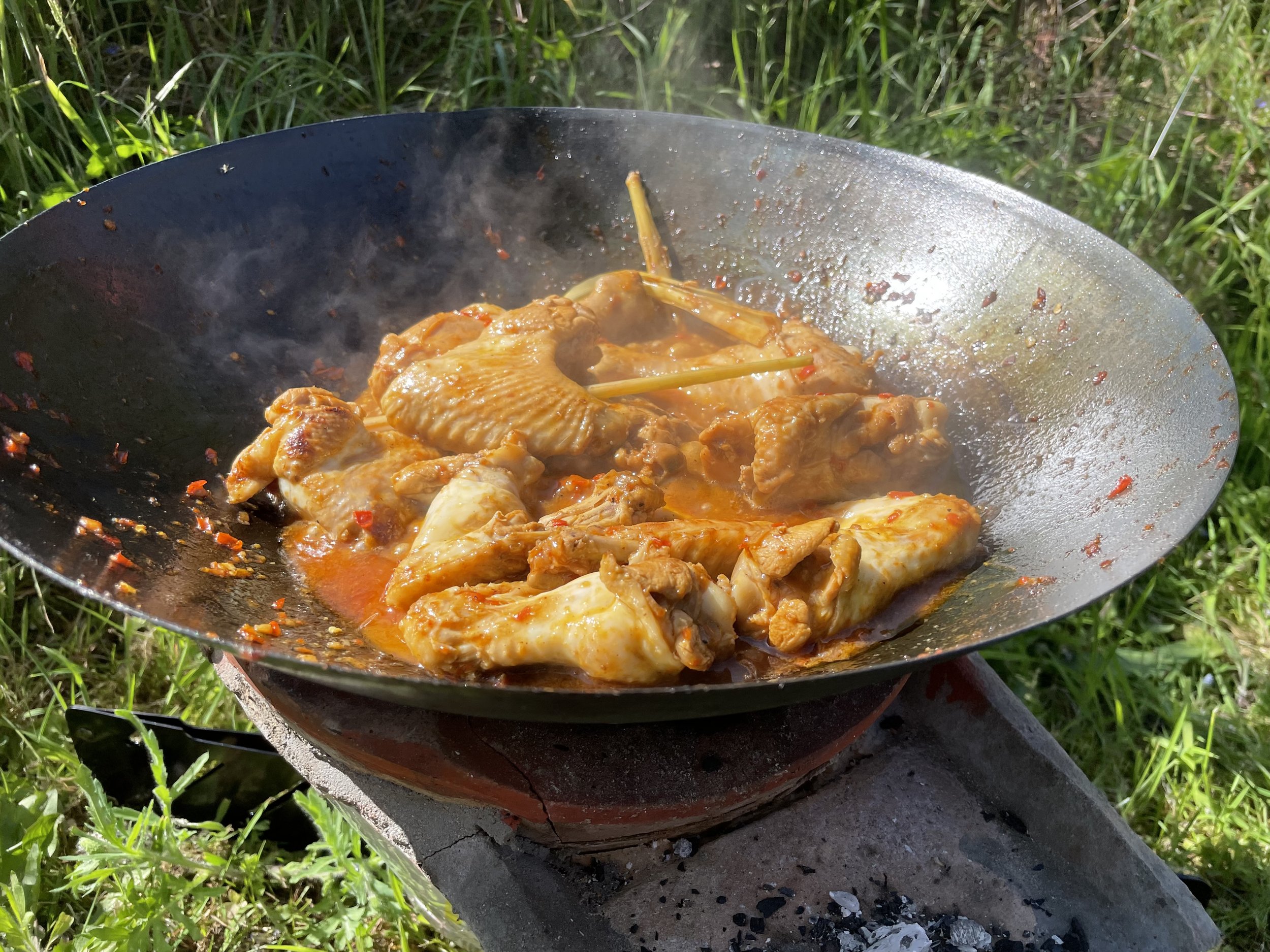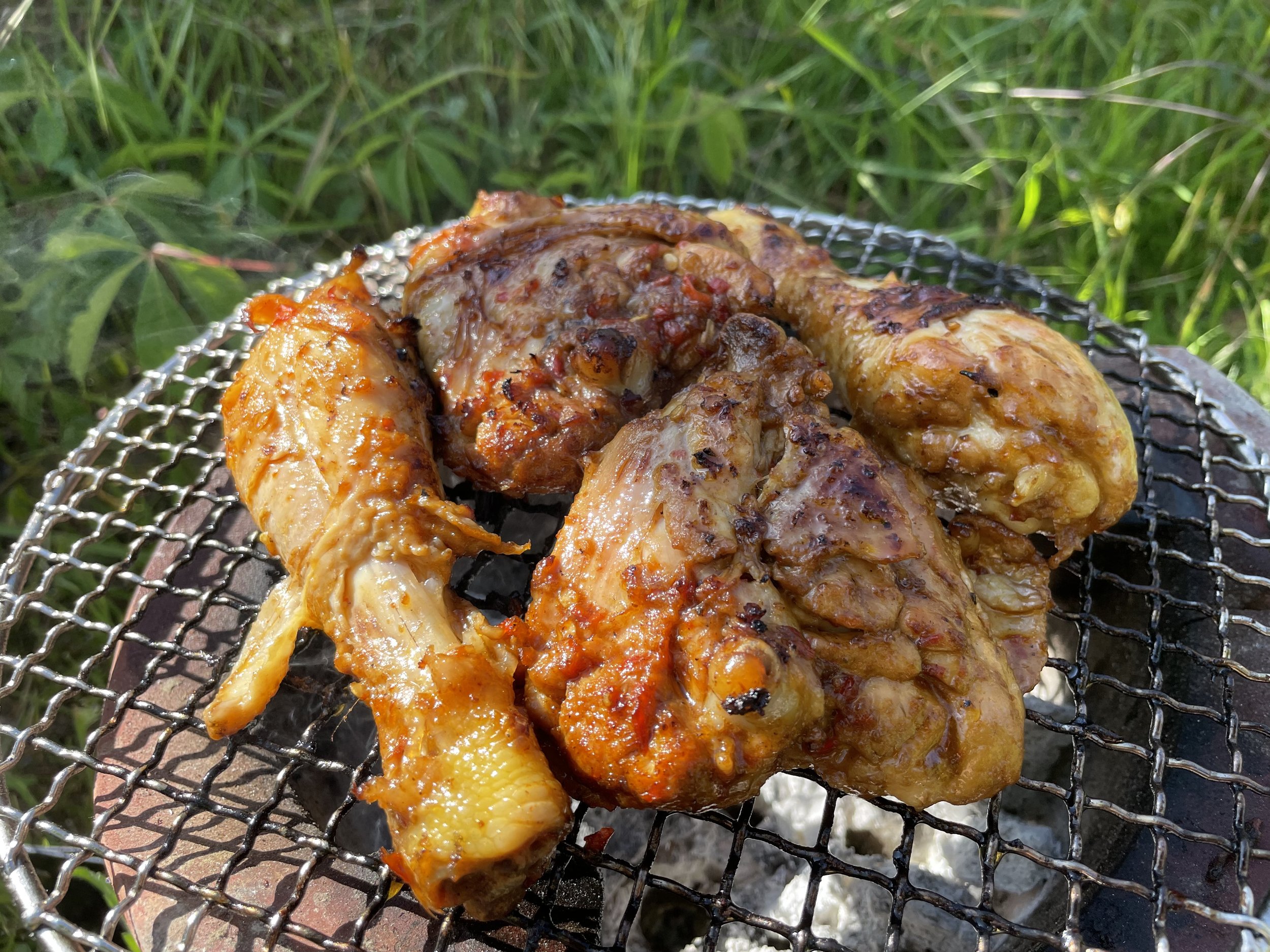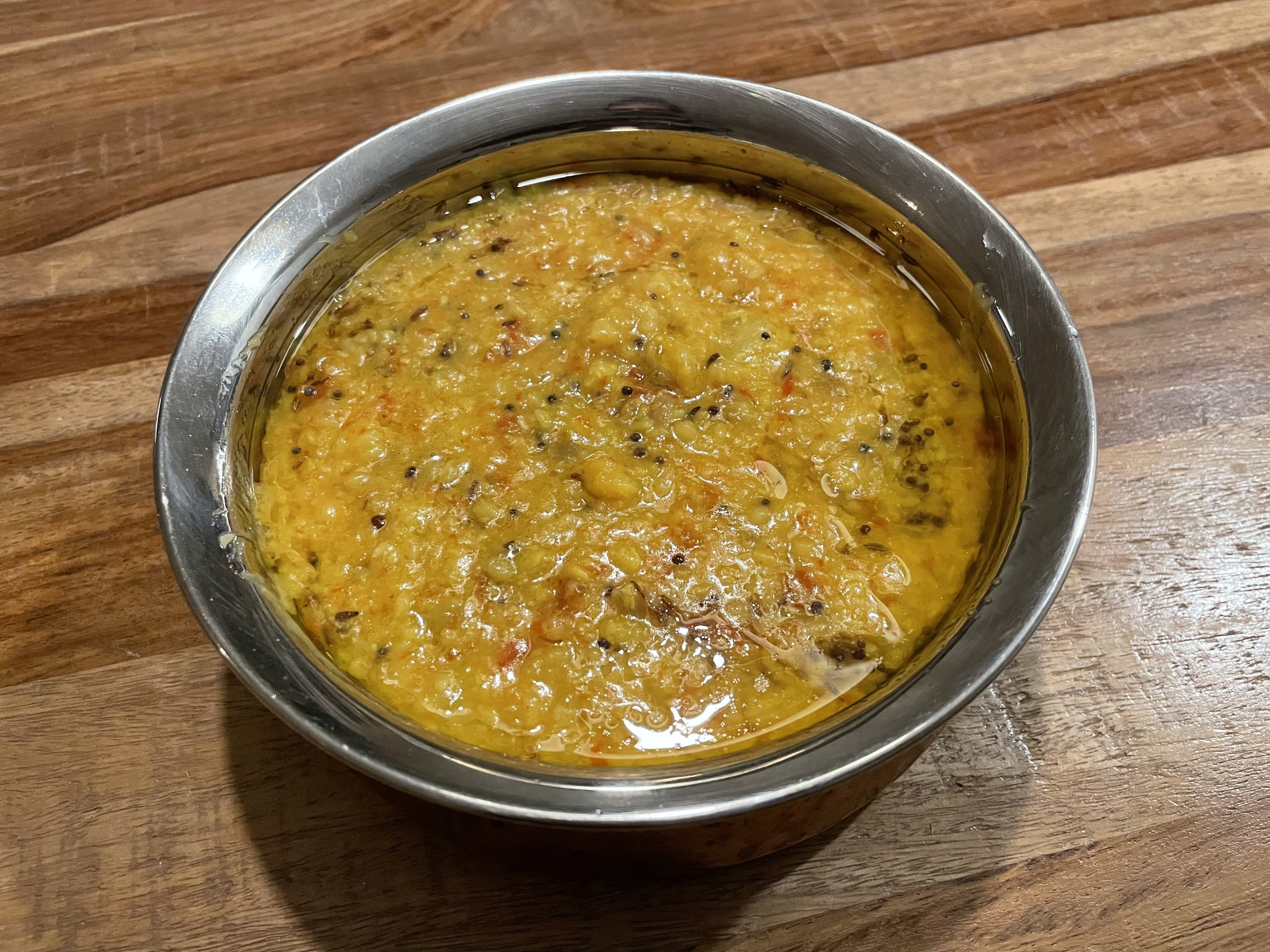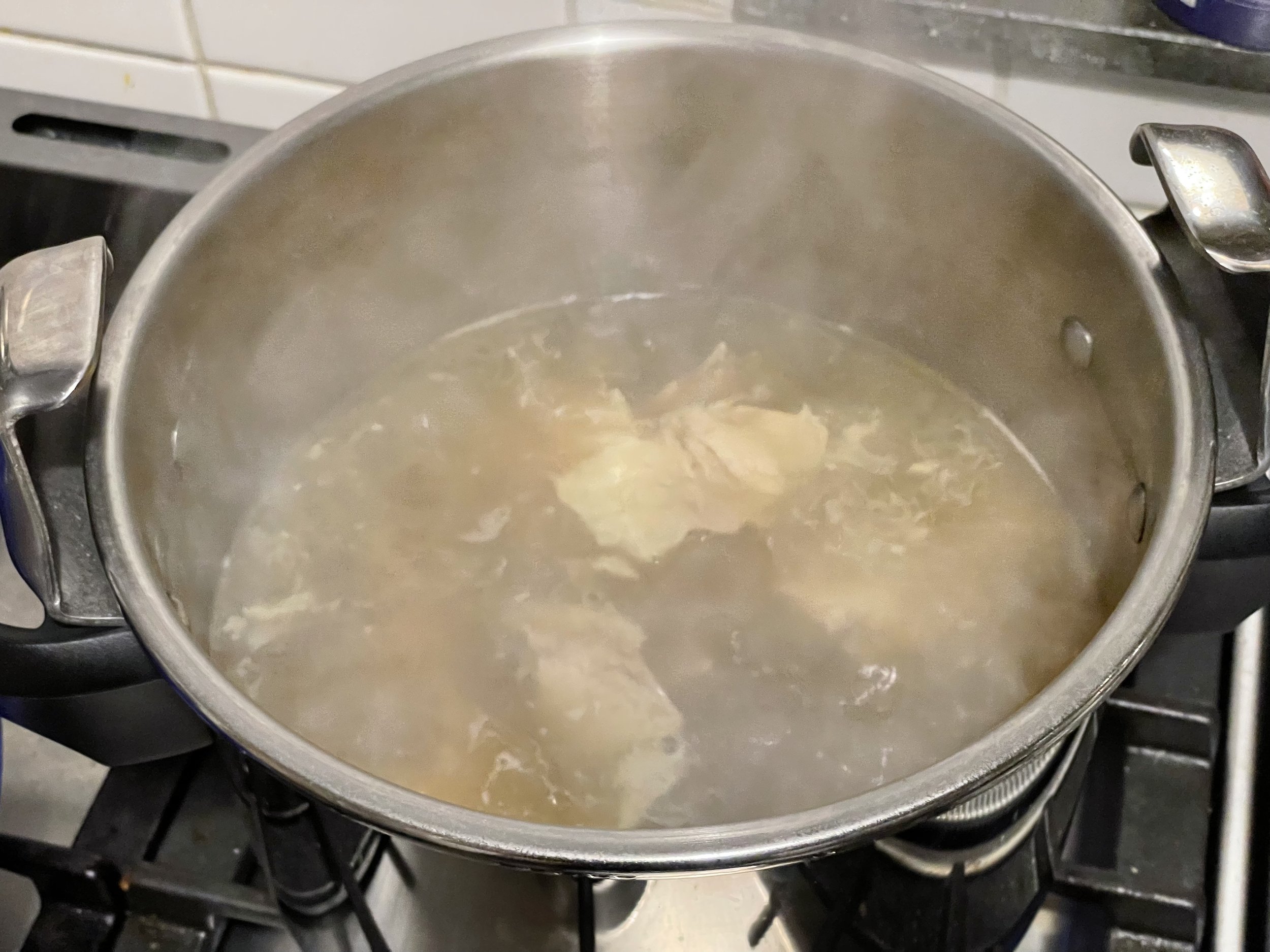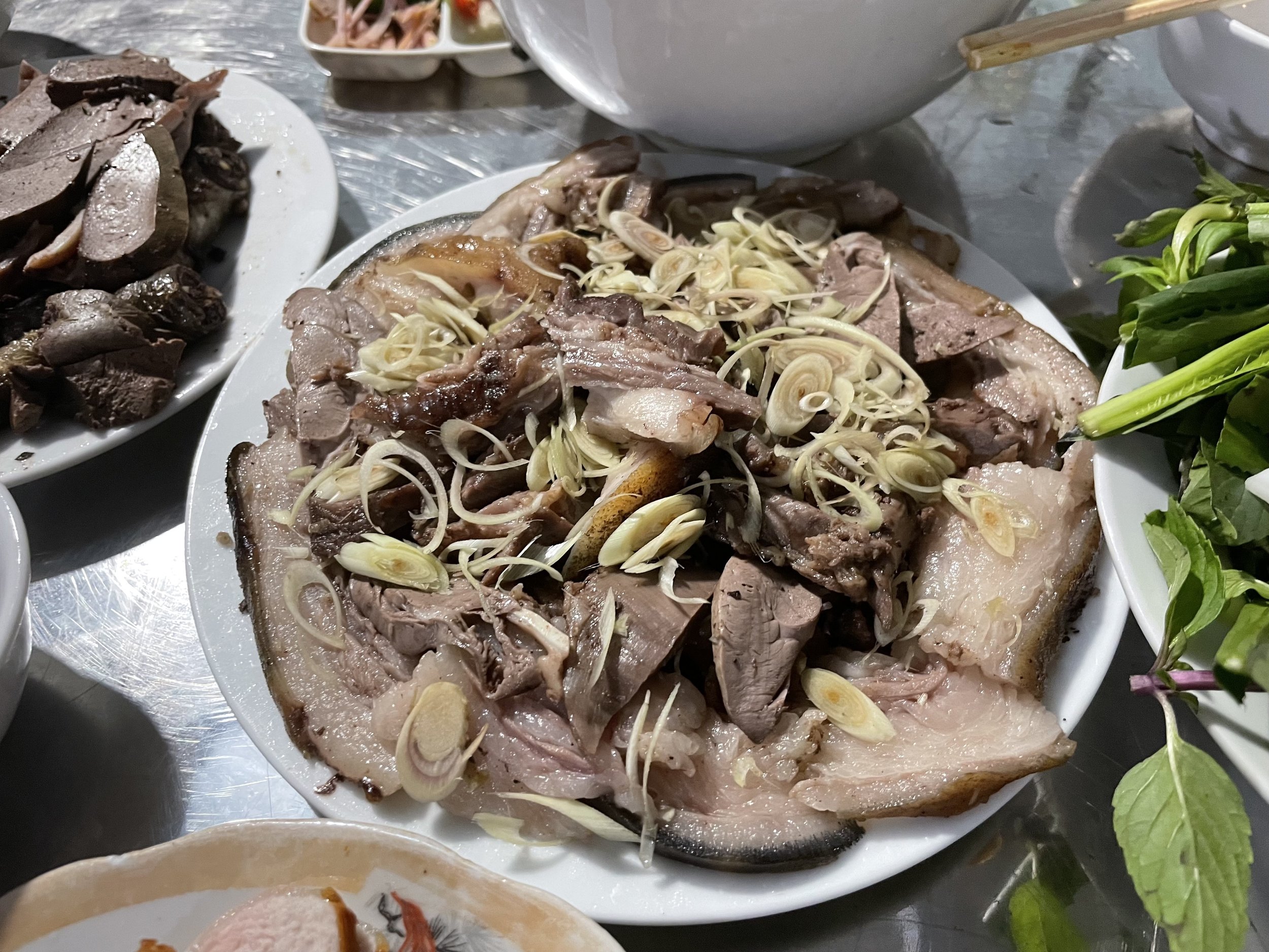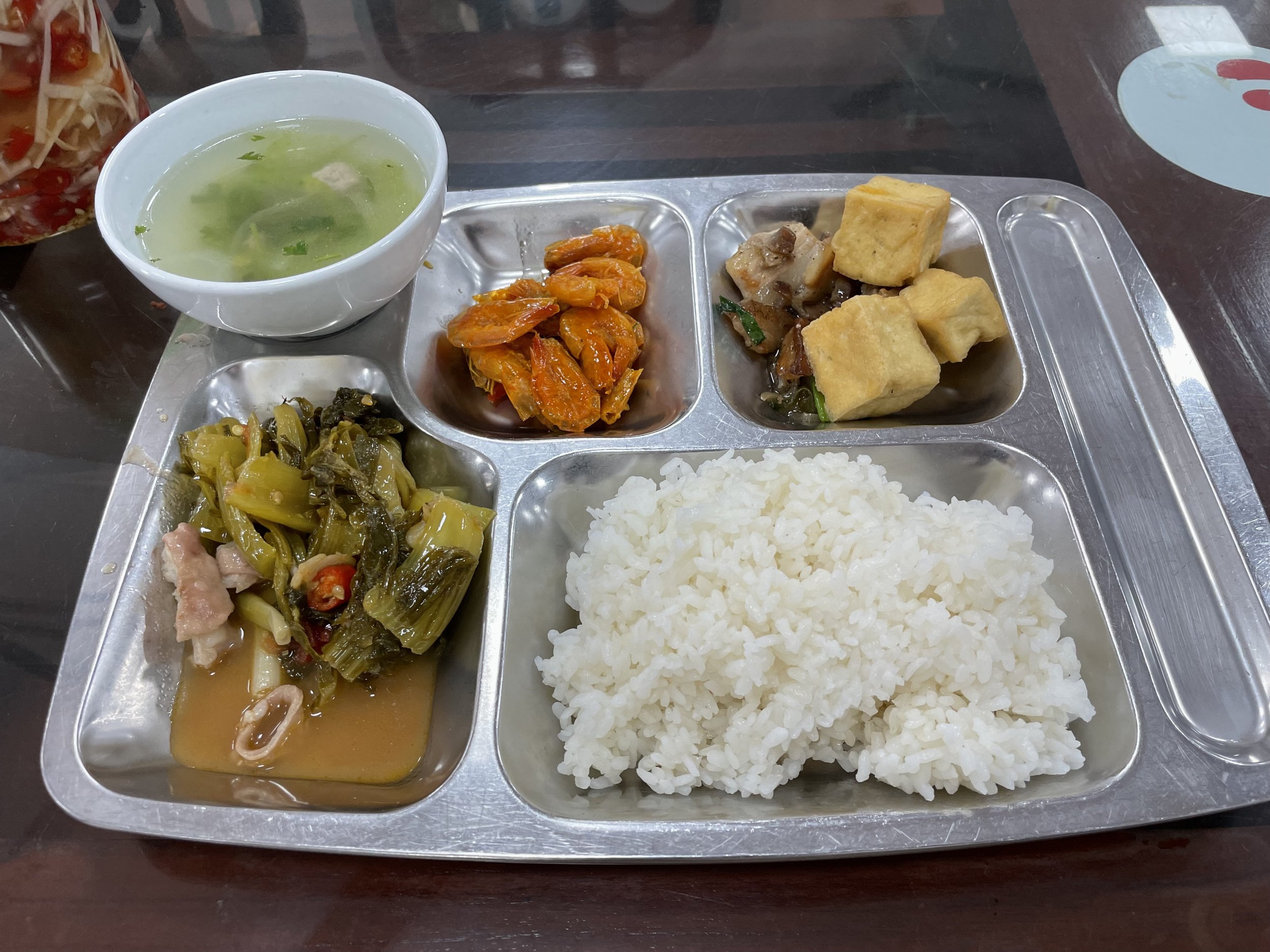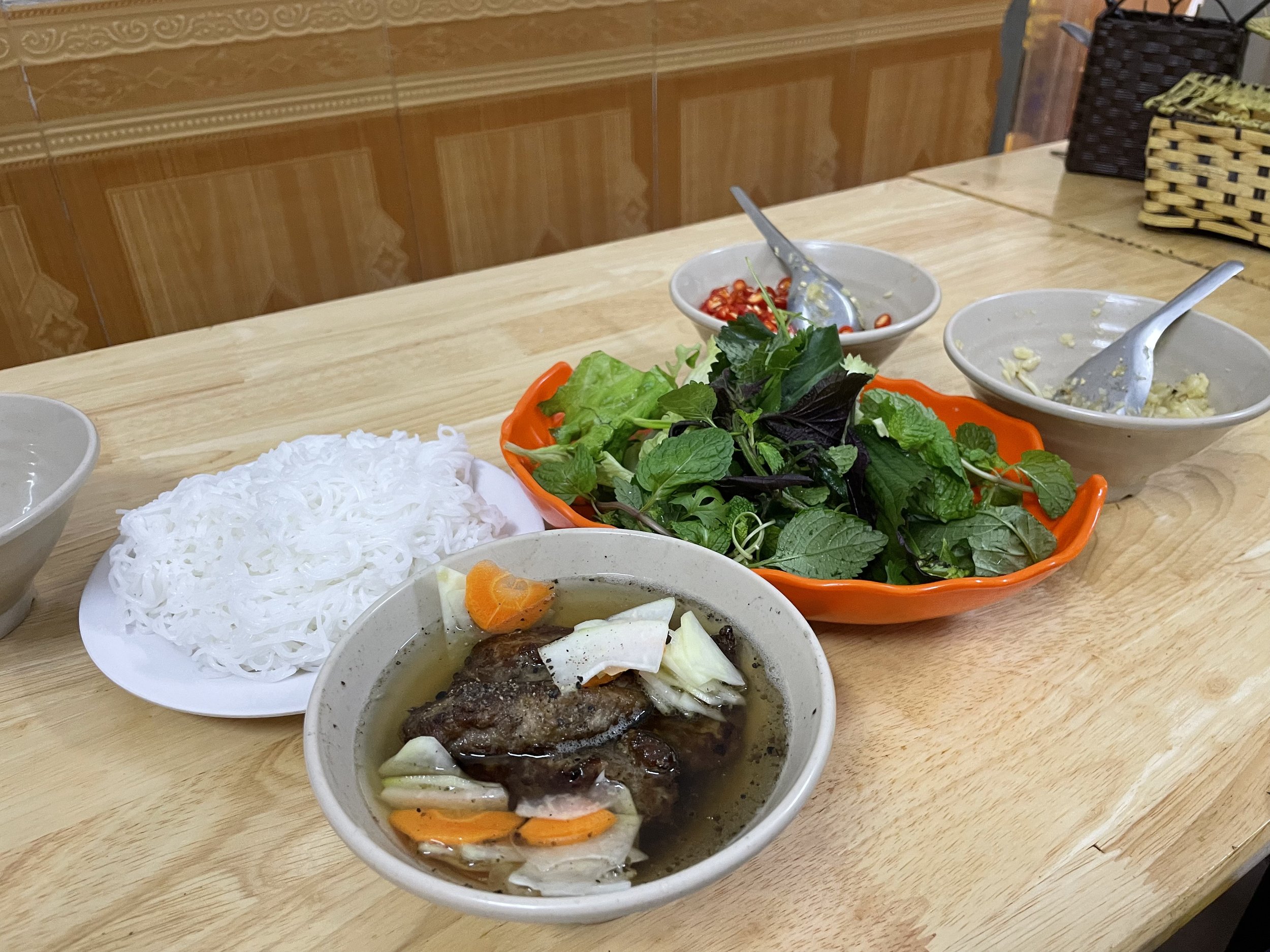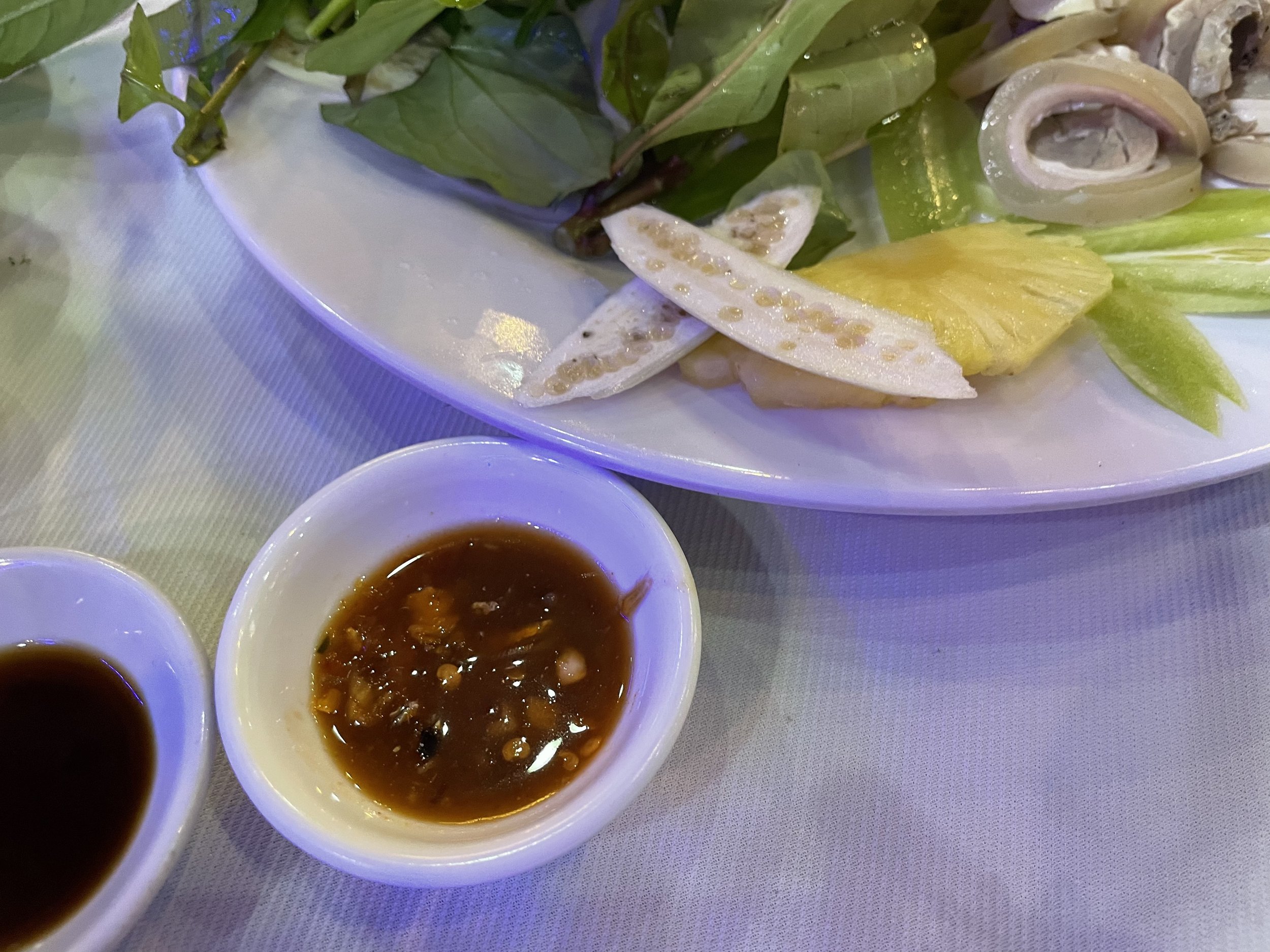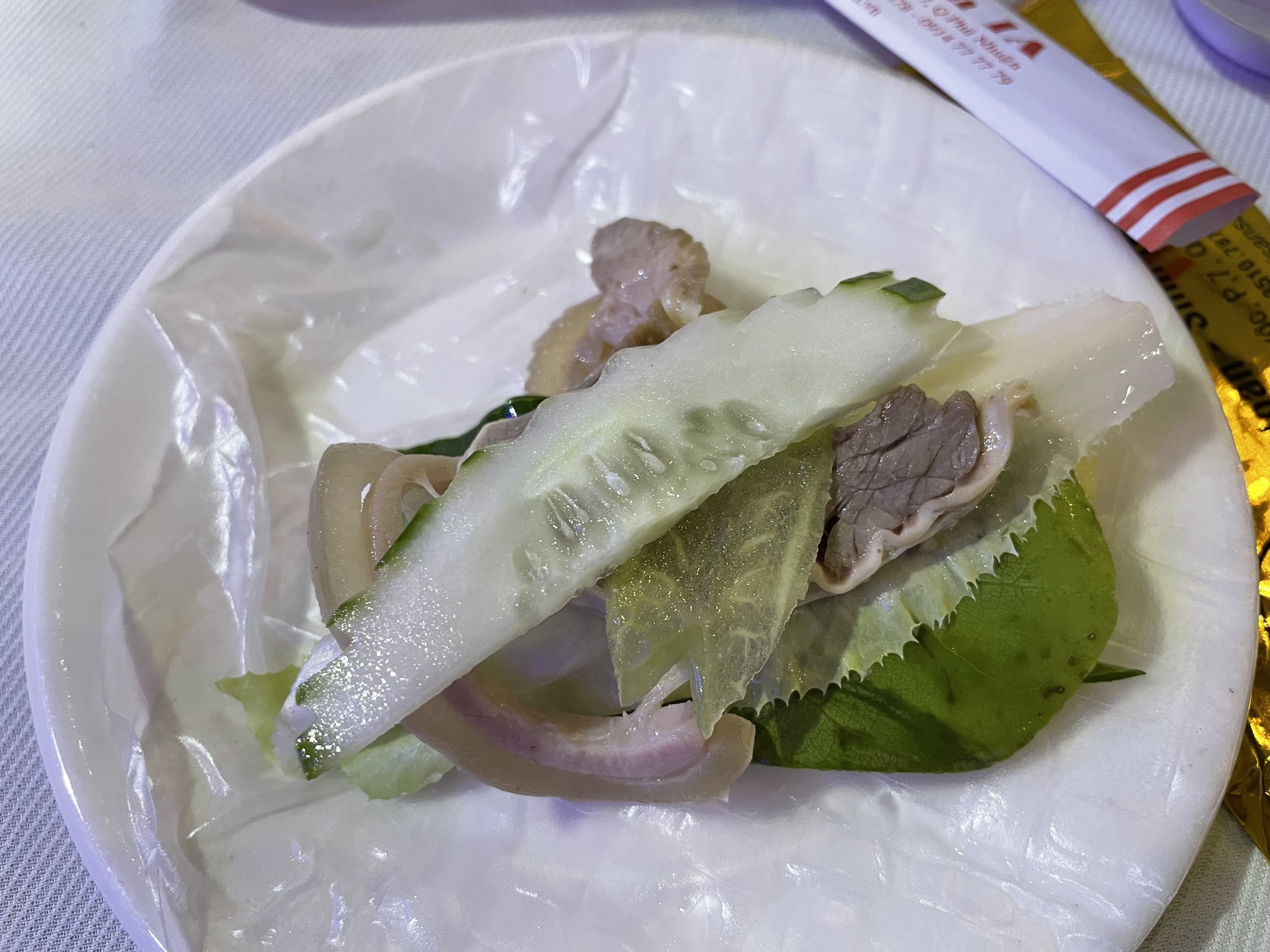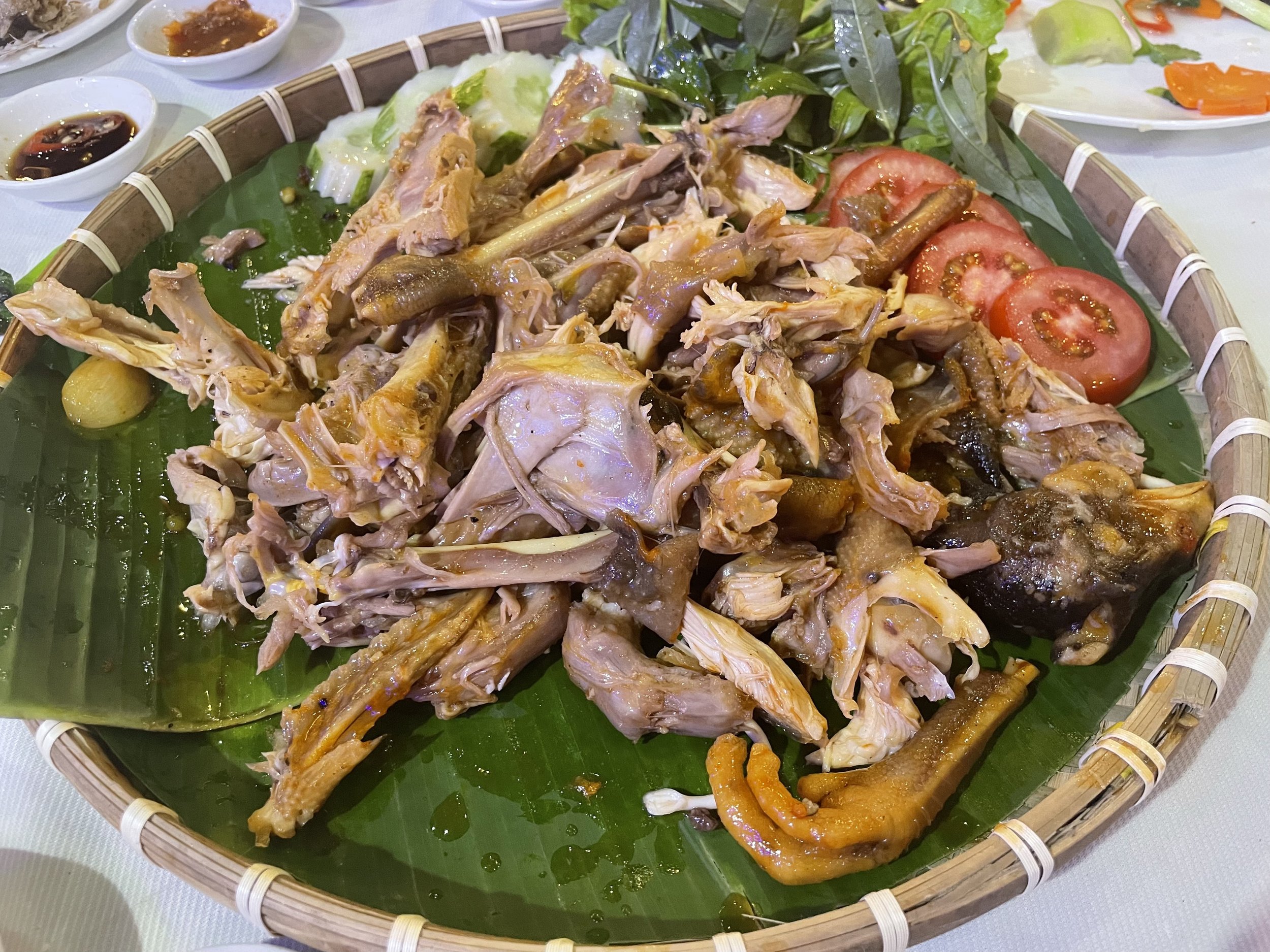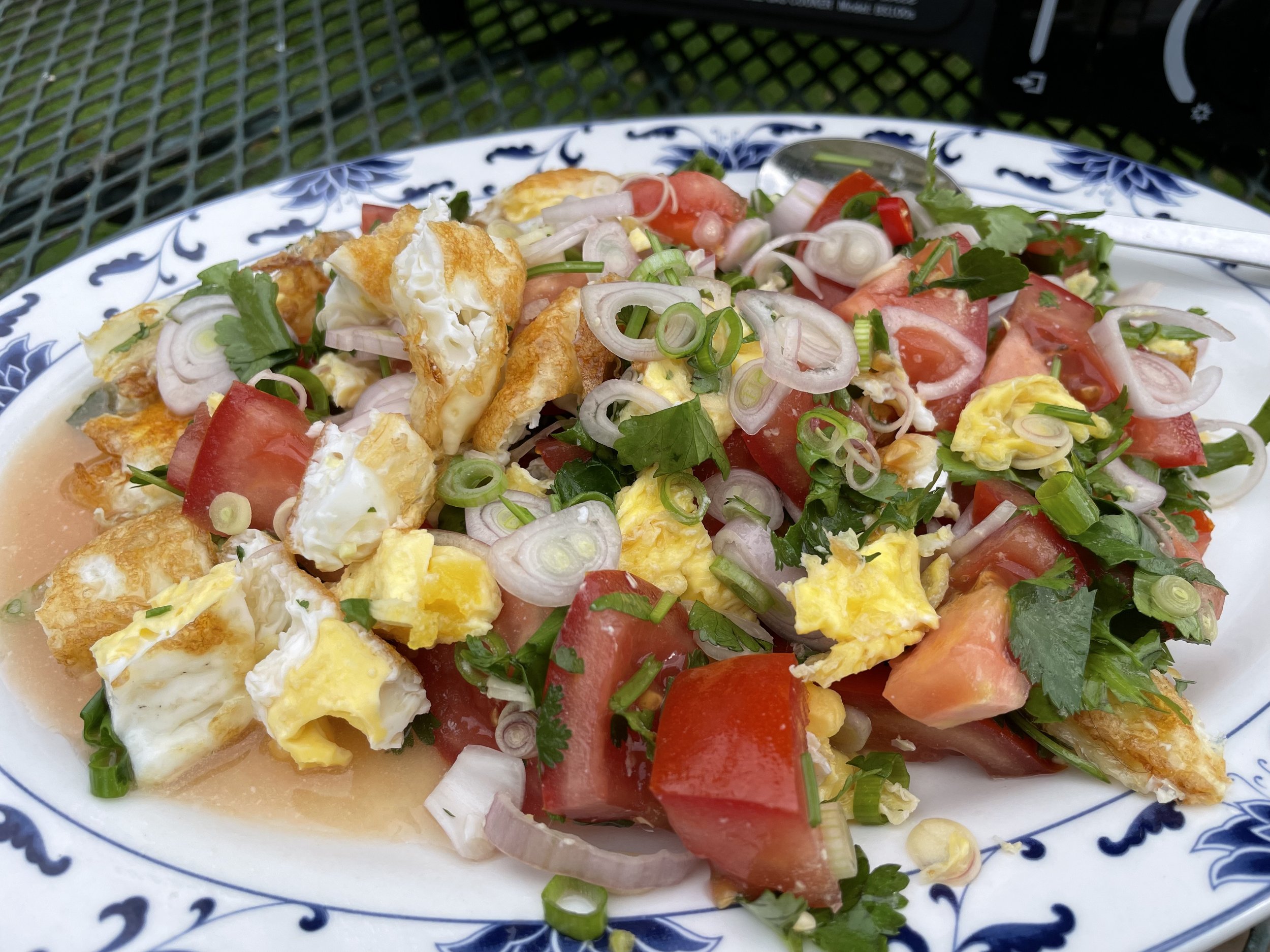GỎI ĐU ĐỦ BA KHÍA
Without thinking too long about it I bought a jar of frozen salted crab I thought I needed for my Thai Som Tam salad. When I inspected the jar more closely at home - it was wrapped in plastic so I could hardly read the label - it actually contains salted Vietnamese BA KHÍA, which are freshwater crabs from the Mekong delta. So, now I will use it for Vietnamese GỎI ĐU ĐỦ BA KHÍA, which translates to Ba khía papaya salad.
Fo the salad you will need to julienne 300 gram green unripe papaya.
Then make the dressing by mixing:
30 gram tôm khô ngâm mềm (dried fermented shrimp, soaked in water).
20 gram đường vàng (sugar).
10 gram tỏi (garlic).
10 gram ờt (red fresh chili).
30 ml nước mắm (fish sauce).
Add 50 ml lime juice and pound in a mortar.
Add the papaya shreds. Then add the following ingredients:
Halved cherry tomatoes and string beans
30 gram Rau răm (Vietnamese coriander).
30 gram Đậu Phộng (peanuts freshly fried, crushed).
30 gram Ngò Gai.
50 gram Mắm ba khía (the freshwater crabs with the liquid from the jar).
Mix well and pound everything in the mortar for another couple of minutes.

